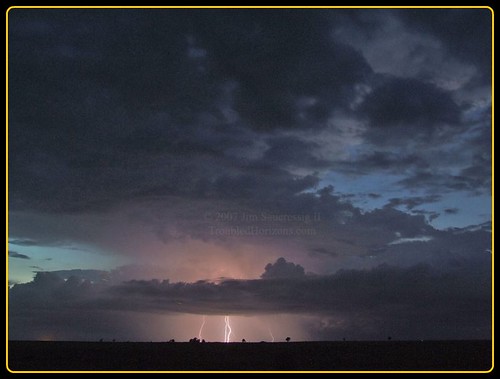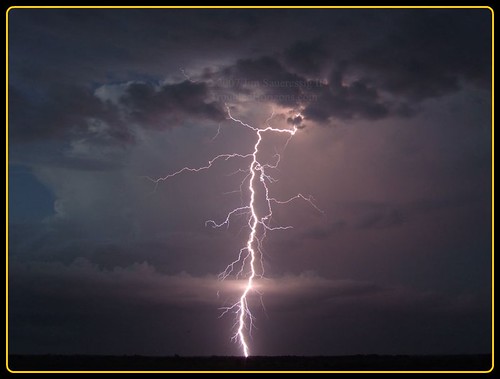Jim Saueressig
EF5
I would love to see some tutorials on taking lightning photos during the DAY. I wanted to attempt this today, but I have no clue how or if it's even possible.
It would require some rapid shooting and you will have to expose according to what the light meter of the camera says, minus one stop (minus two stops if you expect the lightning to be close) to make a catch during the day unless you are on one of them cells with the lightning that hooks the ground for 2-3 seconds at a time or you will need to use a lightning trigger.
Either way you will generally lose the leaders on a strike and only catch the following pulses. I think the best way to catch a good strike in the daytime will be a darker day with rapid shooting on a very electrically charged storm.
http://www.lightningtrigger.com/
There is supposed to be a do it yourself trigger but I haven't found the links to the good ones.....
The closest I have come to a daytime shot that looks good is after sunset but before it was too dark. That way you still had some good color.



Last edited by a moderator:
